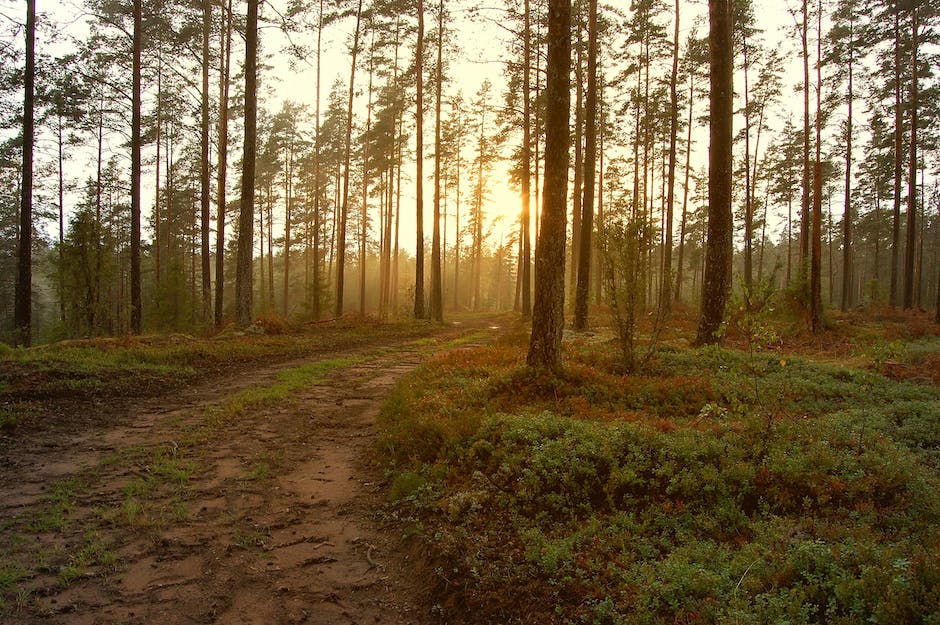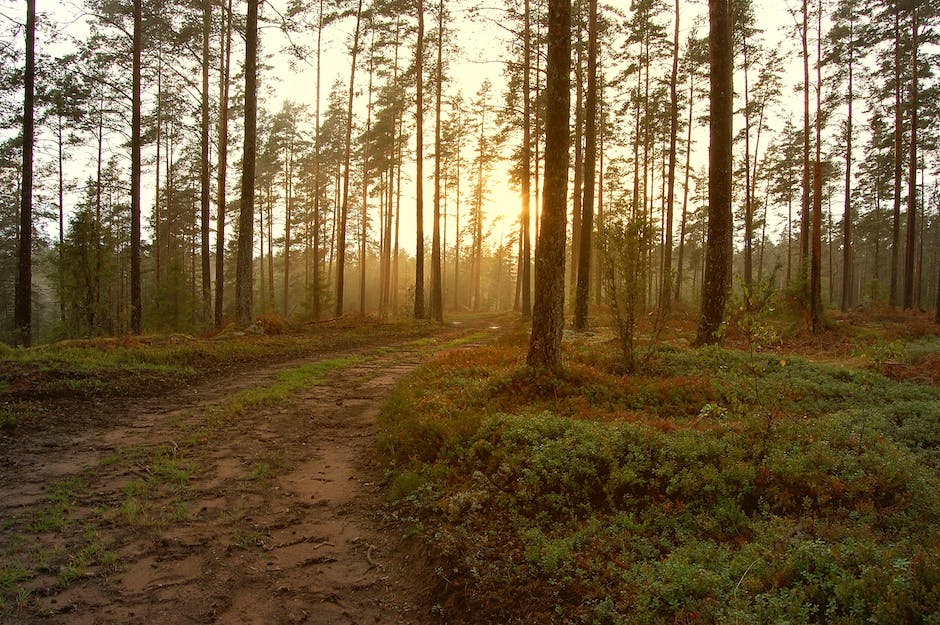Not all pine trees are edible, but some varieties can be a good source of food. Pine trees have a high concentration of vitamin C and are a good source of antioxidants. Some pine trees also contain a substance called pinolenic acid, which has been shown to have anti-inflammatory properties.
Short answer: No, not all pine trees are edible.
Pine trees are a type of conifer, and the edible ones are in the genus Pinus. Some edible pine trees include the Aleppo pine, Austrian black pine, and Japanese red pine. Non-edible pine trees include the Lombardy pine and Scots pine. Pine nuts, also called pinoli, come from the edible pine trees.
Are there any poisonous pine trees?
Yew Pine, also known as Buddhist Pine or Japanese Yew, can cause nausea, diarrhea and vomiting. Ponderosa Pine contains an acid in the needles that can cause miscarriage in livestock. Found more in the West, Australian Pine also known as the Norfolk Pine, can also cause these symptoms in humans.
Eastern White Pine and Virginia Pine needles are two of the most popular edible pine trees. They are a sustainable food source that you can wildcraft year-round. Learning how to identify and safely forage for these needles is essential to ensure you are getting the best possible flavor and nutrition.
Are all pines safe to eat
There are a few species of pine cones that are safe for human consumption, including Sugar Pine, Western White Pine, Longleaf Pine, Red Pine, and Pitch Pine. However, there are also a number of species that are unsafe for human consumption, including Ponderosa Pine, Yellow Pine, Lodgepole Pine, and Norfolk Island Pine. Not enough is known about these species to consider them safe for human consumption.
Pine trees boast a vast array of edible parts. The cambium, needles, and tips can all be used in food, and pine cones – the young, male ones – are also edible. Male cones are small and soft, in contrast to their tougher female counterparts. Pine trees provide a great source of food for both people and animals.
How can you tell if pine is edible?
Pine needles can be used for cooking, but it is best to use younger needles as they have a milder flavor. Be sure to check that the tree has not been sprayed with any pesticides or herbicides before using the needles.
The Buddhist Pine (Podocarpus macrophyllus) is a poisonous plant that can be harmful to both humans and pets. The fruits and leaves of the plant contain a poisonous substance which can cause severe drooling, vomiting, diarrhea and abdominal pain if ingested. If you suspect that your pet or child has ingested any part of this plant, it is important to seek medical attention immediately.
Are all pine trees safe for tea?
Needles from any Cypress or Yew tree should be avoided as they can be toxic. Other than that, any variety of pine, spruce, or hemlock tree can be used to make a great tea. Eastern White Pine needles make a particularly lovely tea.
Pine trees are a valuable source of food and nutrition. Most of the pine trees are edible, with the white pine being the best tasting. You should avoid Norfolk Island, Yew and Ponderosa pine trees, as the bark and needles can be very toxic. However, the majority of pine trees are safe to eat and provide a nutritious source of food.
Can humans eat pine bark
While most tree barks are safe to eat, two that are easier to identify are pine and birch. The inner bark of all birch and pine trees is nutritious and perfect as emergency food. Pine trees have chunky thick outer bark, longer needles and cones (of which the seeds are also edible!).
Eastern White Pine is a tree that has many benefits. It is a favorite among wild crafters because it is non-toxic and has a lot of resin. The resin can be used to make different things like glue, soap, and even jewelry. The tree is also good for building material and can be used to make different things like paper.
Are Christmas tree pines edible?
Yes, you can eat your Christmas tree needles (assuming it’s a spruce, fir, or pine). In fact, once you know how to unwrap the delicious flavors of your Christmas tree in the kitchen, you might just want to start eating edible conifer trees year round. needle-based dishes can be a bit of an acquired taste, but they’re definitely worth exploring if you’re looking for something new and different to add to your repertoire. Just make sure to cook the needles well to soften them up before eating.
Pine needles are not only safe, but they can also have a number of benefits. Pine needles can soothe sore throats, fight illness and infection, lower blood pressure, improve skin and slow down the aging process. Pine needles are often infused in cocktails and desserts as well, making them a versatile and potentially healthy addition to your diet.
Do all pine trees produce edible pine nuts
Pine nuts are a type of seed that comes from pine trees. Although all pine trees produce edible pine nuts, only 18 species of pine trees produce seeds that are large enough to be worth harvesting. Most of these species of pine trees are found in North America, Europe, and Asia. The cultivation and harvesting cycles of pine nuts are both long and labor-intensive.
Pine wood shouldn’t be used for cooking, as it can make food taste bad and, in some cases, make you sick. The resin in pine wood can contain terpenes that can give off an unpleasant smell and taste. If you are using pine wood for grilling or smoking meat, make sure to use a softwood or hardwood that doesn’t contain resin.
How can you tell if its a pine tree?
There are many ways to identify conifers, but one of the most distinguishing features is their needle-like leaves. Conifers are evergreen trees with leaves that are narrow and often have a sharp point, which distinguishes them from other types of trees. While the needles of some conifers may be arranged in clusters, others may have a single needle attached to the branch.
Sugar pines are one of the tallest and most graceful of all the pine trees. They are commonly found between 40 and 60 meters tall, with some even growing up to 76 meters tall. The mature trunks of these trees are distinguished by their deeply furrowed cinnamon-red bark and can grow up to 15-30 centimeters wide. The sweeping branches of the sugar pine contain needle leaves that are 8 centimeters long and arranged in clusters of 5. These beautiful trees are a sight to behold and add a touch of majesty to any landscape.
Are Buddhist pine berries edible
Most species of Podocarpus have edible fruit that can be eaten raw or cooked into jams or pies. The fruit has a mucilaginous texture with a slightly sweet flavor. However, the fruit is slightly toxic and should be eaten in moderation, especially when eaten raw.
The buddhist pine is an evergreen tree which naturally grows in tropical mountain regions. It has dark green, narrow lanceolate leaves which resemble the needles of the yew. The buddhist pine can become up to 40 m tall.
Can a pine tree grow in your lungs
This is a very rare case, but it highlights the importance of proper diagnosis by surgeons. In this case, what was first believed to be a tumor turned out to be a living, growing fir tree. This case is a great reminder of the importance of careful and thorough analysis before performing surgery.
Pine needle tea is a great way to get your daily dose of vitamins and minerals, but not all pine trees are suitable for brewing. Some pine trees are poisonous or toxic, so it’s important to know which ones to avoid. Safe pine trees for tea include Lodgepole Pine, Monterey Pine, Ponderosa Pine, Norfolk Pine (Australian Pine), Loblolly Pine, Common Juniper, and Yew.
Warp Up
No, all pine trees are not edible. Some pine trees are poisonous and can cause serious health problems if ingested.
Although all pine trees are not edible, many are. The edible pine trees have nuts that are safe for human consumption. These nuts can be used in baking or eaten raw as a snack. So, if you’re ever in the mood for a pine-flavored treat, go ahead and give it a try!
Jackson Hill is a passionate arborist with years of experience in the field of trees. He developed his fascination with trees at a young age, spending countless hours exploring the forests and climbing trees. Jackson went on to study arboriculture and horticulture at Michigan State University and later earned a degree in forestry from the University of Michigan.
With his extensive knowledge and expertise, Jackson has become a trusted authority on trees and their impact on the environment. His work has helped shape the field of arboriculture and he continues to be a leading voice in the industry.
